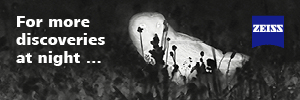- Grallaria oneilli
Identification
15 cm
- Dark reddish-brown both above and below
- Underside paler than upperside and gradually becoming paler towards the rear and center; central belly is whitish
- Eye dark brown
- Eye ring pale
- Bill dark but with buffy base of lower mandible
- Legs dark
Distribution
South America: east slope of the Andes of central Peru (Huánuco south of the Huallaga River and Pasco north of the Perené River)
Taxonomy
This is a monotypic species[1].
This species and 15 others were previously included in a complex of Rufous Antpitta/Chestnut Antpitta.
Habitat
Presumably similar to other members of the complex, it should be sought after in areas with dense understory of forest, second growth etc. Found at elevations of 2350–3650 m asl.
Behaviour
Presumably similar to other members of the Rufous Antpitta/Chestnut Antpitta complex. At least one bird from this species is known to have eaten insects and similar invertebrates.
Vocalisation
Long song is a series of about 20 frequency-modulated notes given over ca 3 seconds. The series has even pace but rises in pitch at the end. The short song consists of a short first note and a long second note, both also frequency modulated.
References
- Clements, J. F., T. S. Schulenberg, M. J. Iliff, S. M. Billerman, T. A. Fredericks, J. A. Gerbracht, D. Lepage, B. L. Sullivan, and C. L. Wood. 2021. The eBird/Clements checklist of Birds of the World: v2021. Downloaded from https://www.birds.cornell.edu/clementschecklist/download/
- Link to paper by Isler et al. (2020) describing taxonomy of this species.
Recommended Citation
- BirdForum Opus contributors. (2024) Panao Antpitta. In: BirdForum, the forum for wild birds and birding. Retrieved 27 July 2024 from https://www.birdforum.net/opus/Panao_Antpitta
External Links
GSearch checked for 2020 platform.1




